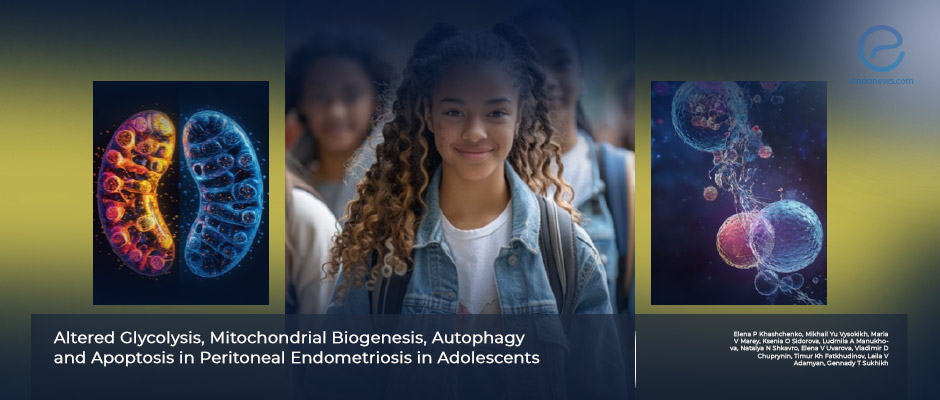Metabolic and Cellular Changes in Adolescent Peritoneal Endometriosis
Oct 25, 2024
Glycolytic and Mitochondrial Pathways in Early Endometriosis
Key Points
Highlight
- Energy metabolism and signaling pathways altered in adolescents with peritoneal endometriosis, highlighting early disease mechanisms.
Importance
- Understanding metabolic changes in endometriosis during adolescence can inform early diagnosis and targeted therapies for this age group.
What’s done here?
- This case–control study analyzed cellular and endosomal profiles related to glycolysis, mitochondrial biogenesis, apoptosis, autophagy, and estrogen signaling.
- Sixty adolescents were involved, 45 with laparoscopically confirmed peritoneal endometriosis and 15 with control.
- Markers in peritoneal endometriosis were compared to non-affected peritoneum and a control group.
Key results
- Higher levels of ERβ identified in peripheral blood and peritoneal fluid exosomes and peritoneal tissues of patients with endometriosis, correlating with disease severity.
- Glycolysis-related markers (MCT2, PDK1, Glut1, Hex2, TGFβ, and Hif-1α) are increased in endometrioid foci.
- Mitochondrial biogenesis markers such as OPA1 and DRP1 are elevated in affected areas.
- Autophagy markers like P38, Beclin1, and Bnip3 arenenhanced in endometrioid foci.
- Apoptosis markers (Bcl2/Bax ratio) are decreased in endometrioid foci versus non-affected tissue.
- Altered profiles of ERβ, Glut1, MCT2, and Bnip3 are detected in plasma exosomes of patients with peritoneal endometriosis.
Lay Summary
In a study published in the International Journal of Molecular Sciences, Khashchenko et al. explored the association of cellular and exosomal markers of glycolysis, mitochondrial biogenesis, apoptosis, autophagy, and estrogen signaling in peritoneal endometriosis among adolescents to understand early disease-related metabolic reprogramming.
This case–control study focused on adolescent girls aged 13–17 and total of 60 participants were included: 45 with laparoscopically confirmed peritoneal endometriosis and 15 with paramesonephric cysts as controls. Samples of peripheral blood, peritoneal fluid, endometrioid foci, and normal peritoneum were collected. Key molecular markers were assessed using Western Blot and PCR techniques to evaluate their expression levels and their impact on cellular metabolism, estrogen signaling, and autophagy.
The findings showed elevated levels of ERβ, glycolysis markers, and mitochondrial biogenesis markers in both blood exosomes and endometriotic lesions compared to controls, suggesting systemic metabolic alterations from the disease's early stages. Increased levels of autophagy markers and apoptotic resistance in endometriotic foci indicate cellular reprogramming.
Understanding these cellular differences may aid in developing new treatment plans for endometriosis and provide insights into the early stages of the disease, particularly in adolescents with peritoneal endometriotic lesions, which may be linked to the earliest episodes of retrograde bleeding and endometriosis.
Research Source: https://pubmed.ncbi.nlm.nih.gov/38673823/
peritoneal endometriosis mitochondria glycolysis apoptosis adolescent

